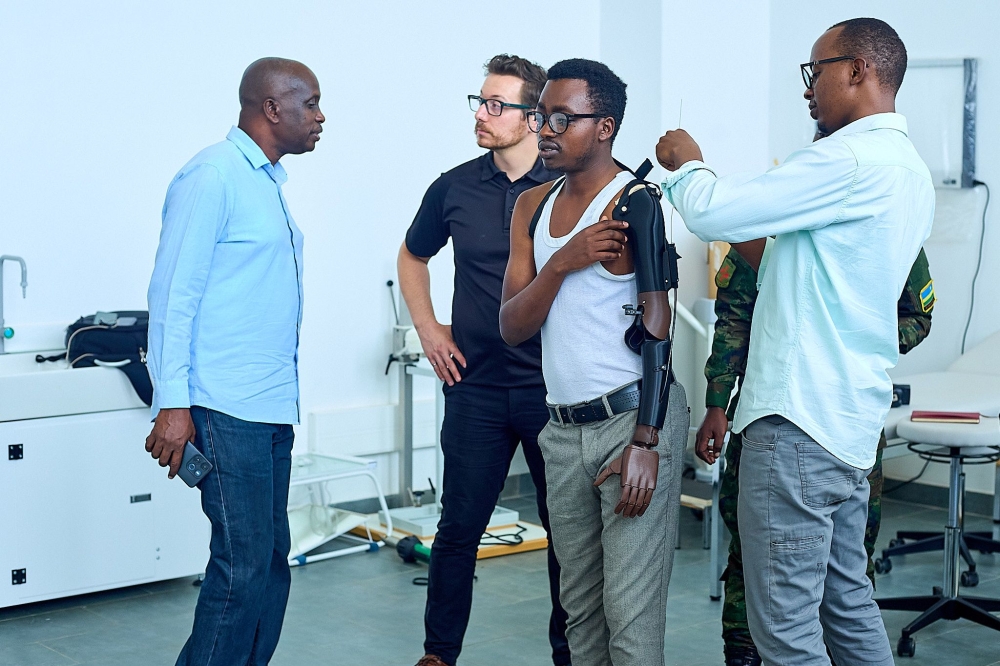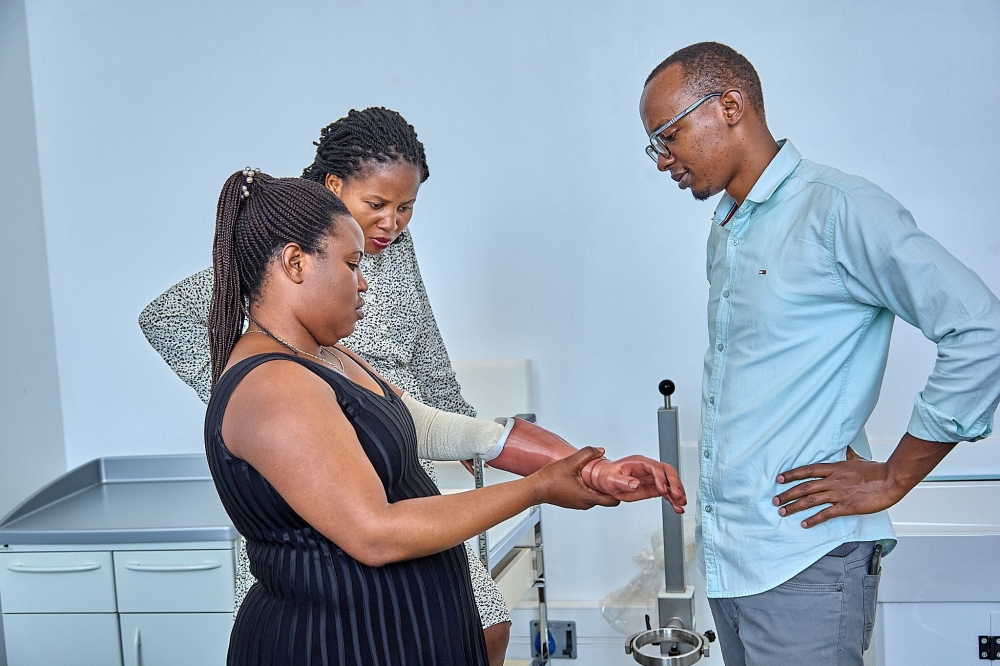

A new three-dimensional (3D) printer has been unveiled as part of an initiative aimed at improving the lives of amputees in Rwanda by increasing access to cheaper prosthetic solutions and comprehensive support.
It is the second 3D prosthetics printer, complementing the first printer established in 2022. It is the first printer of upper limp prostheses in Rwanda.
ALSO READ: Rwanda gets Rwf390m modern prosthetics lab
The 3D printer was unveiled on October 7, by the National Union of Disability Organisations in Rwanda (NUDOR), in collaboration with the University of Rwanda’s Centre of Excellence in Biomedical Engineering and E-Health (CEBE) and Bridging Afrika, launched EmpowerAbility .
This advanced technology is anticipated to provide affordable, locally produced 3D-printed prosthetics, which are typically very costly.
Ange Brave Mbamumana, a technician at HPV Gatagara Nyanza, who produces prosthetics and orthotics, stated, "they are extremely difficult to obtain in Rwanda.


"This is a serious issue, particularly as many people in need come from humble backgrounds, and the usual insurance, Mutuelle de Santé, does not cover prosthetics,” Mbamumana said.
He added that the new 3D printer is expected to save time and simplify the production process compared to the existing model.
"For instance, creating a prosthetic for someone who has lost a leg above the knee used to take at least a week with our previous equipment; now it will take a maximum of two days,” Mbamumana explained.
He also believes that the costs associated with products from this new 3D printer will be lower than current prices.
ALSO READ: Over Rwf7bn more needed to cover prostheses for people with disabilities
Among the first beneficiaries of this new technology is 25-year-old Theoneste Safari, who lost his left arm in an accident ten years ago. He expressed his relief at receiving a prosthetic arm.
"Since my accident, this is the first time I have appeared in public dressed properly with two arms. While it may not be a real arm, it gives me comfort and confidence, and it will assist me in daily activities, requiring less energy to use,” Safari said.
Safari had previously suggested that his family purchase a prosthetic, but they found it very expensive.
Marie Chantal Uwihirwe, 23, lost her arm in an accident when she was five. She expressed her gratitude for the new prosthetic, which will complement her existing arm.
"Having one arm can limit your ability to lift things. Now that I have a prosthetic that works effectively, my life will change significantly. Additionally, the way society views us individuals with disabilities may also change,” she noted.
Marie Louise Mukangoga, Child Safeguarding and Protection Advisor at NUDOR, emphasised the importance of quality in the prosthetics produced by the new 3D printer. She stated that this technology will enhance production and reduce costs.
Mukangoga called for collaboration among the government and other stakeholders to ensure these prosthetics are accessible and affordable for those in need.
She also highlighted ongoing challenges in promoting disability inclusion, noting the stigma surrounding disability as a significant barrier.
"The stigma that exists among parents, individuals with disabilities, and society at large hampers the successful inclusion of individuals with disability. Even if parents are financially capable, they may neglect to seek assistance for their children due to a belief that people with disabilities are of no importance,” she said.
Mukangoga confirmed that efforts are underway to raise awareness in the community about the negative effects of stigma.


